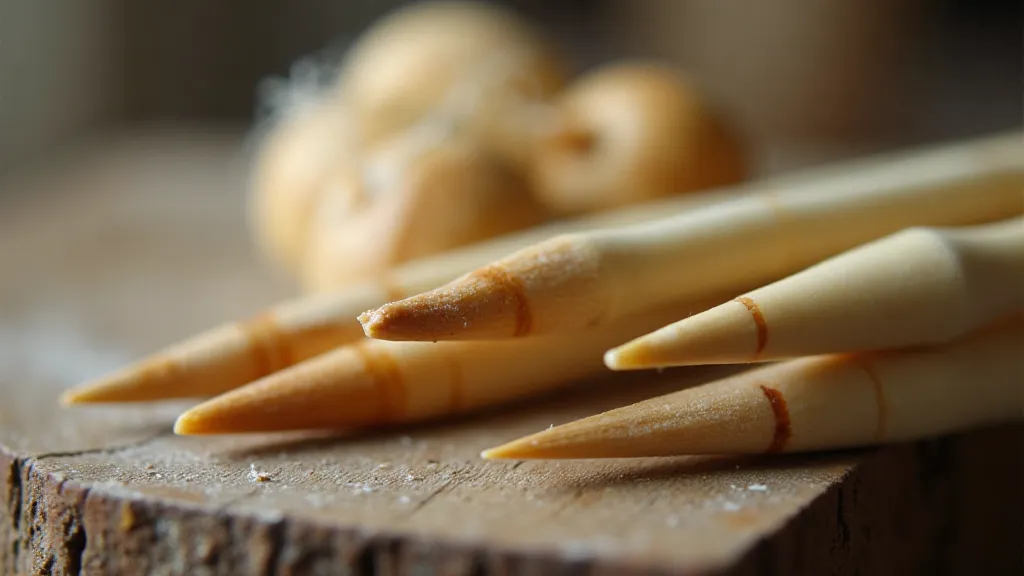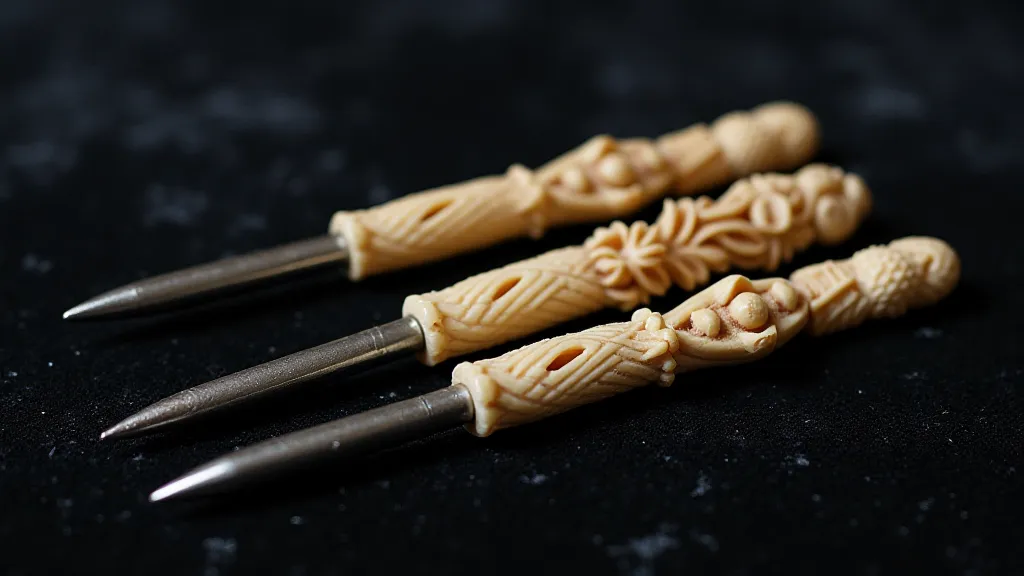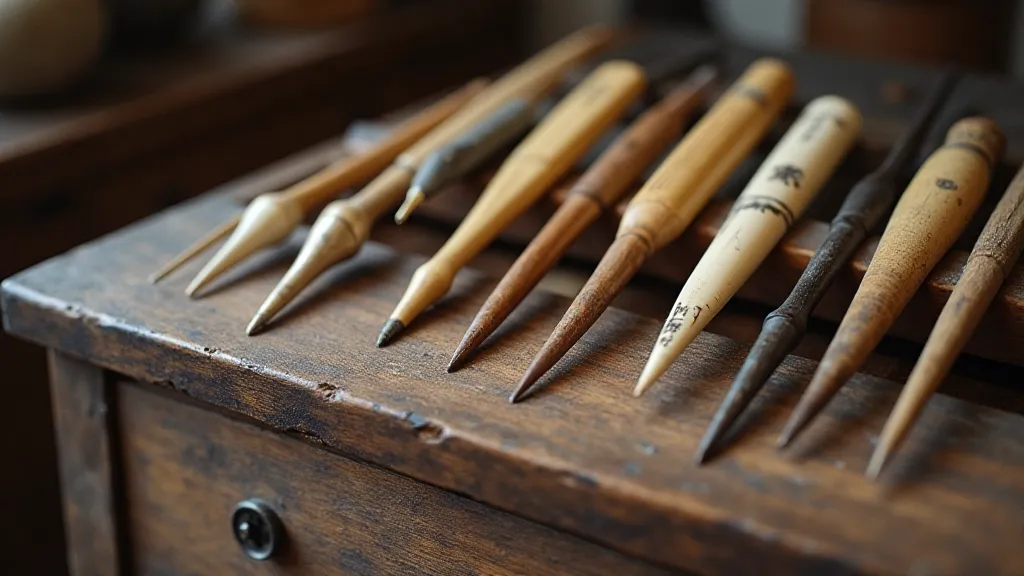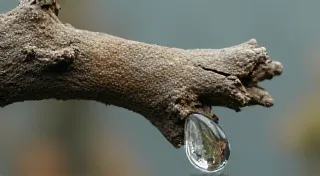The Weaver's Compass: How Needles Guided the Craft’s Evolution
The quiet click of knitting needles. A sound that’s echoed through centuries, a comforting rhythm accompanying creation. We often think of knitting as a timeless tradition, a comforting pastime passed down through generations. But the tools themselves, the unassuming knitting needles, have a story to tell – a story intricately woven with the broader narrative of textile design, production techniques, and even societal shifts. To hold a pair of antique knitting needles isn't just to hold a crafting tool; it's to grasp a piece of history, a tangible link to the hands that shaped our world.
My own fascination began with my grandmother’s trunk. Filled with faded fabrics and forgotten treasures, it held a small, tarnished box. Inside lay a pair of bone knitting needles, worn smooth from years of use. They weren’t particularly ornate, but something about their weight, the subtle curve of the bone, spoke to a lineage of craft. They felt… purposeful. Learning about their history felt less like research and more like uncovering a secret whispered across time.
The Early Days: Before Metal and Mass Production
Before the advent of readily available metal, knitting needles were primarily crafted from natural materials. Bone, ivory, horn, wood, and even thorns were common choices. The availability of these materials dictated regional styles and the overall appearance of the needles. Imagine the ingenuity required to carefully shape a thorn into a functional needle! The earliest evidence of knitting itself dates back to the 1st century AD, but the tools used in those earliest efforts were likely simple, roughly hewn sticks.
During the medieval period, as knitting began to evolve from a simple craft to a burgeoning industry, the quality and sophistication of the needles gradually improved. Bone needles, often sourced from large animals, became more prevalent, allowing for more precise shaping. The grain of the wood used for wooden needles became a crucial factor, affecting durability and the ease with which they could be worked. This period reflects a direct correlation: as knitting became more complex, so too did the requirements for the needles themselves.

The Rise of Steel and the Industrial Revolution
The Industrial Revolution irrevocably altered the landscape of textile production, and the crafting of knitting needles was no exception. The introduction of steel and the development of mechanized production processes led to a shift away from natural materials. Steel needles offered greater strength, uniformity, and a level of precision previously unattainable. This wasn’t universally welcomed, of course. Many traditional crafters lamented the loss of the handcrafted quality and the unique character of bone and wood needles. But the economic pressures of mass production proved irresistible.
The 19th century saw a dramatic increase in the variety of knitting needle designs. Different tip shapes emerged, optimized for different stitch patterns and yarn weights. Pointed needles became the standard for fine work, while blunt needles were preferred for heavier yarns and cables. The standardization of sizes, a direct consequence of industrial production, simplified yarn purchasing and pattern creation.
Identifying Antique Knitting Needles: Key Characteristics
So, how can you identify antique knitting needles? A few key characteristics can offer valuable clues:
- Material: While steel needles became commonplace in the late 19th century, earlier examples will likely be crafted from bone, ivory, horn, or wood.
- Shape & Size: Early needles were often longer and more tapered than modern versions. Sizes were less standardized, so don't expect perfect uniformity.
- Tip Shape: Examine the tips closely. Early needles often had blunt or rounded tips, while later steel needles developed more pointed shapes.
- Markings: Some needles, particularly those produced during the later Victorian era, may bear maker's marks or patent dates. These can provide invaluable information about their age and origin.
- Wear & Patina: Look for signs of wear and tear. The subtle marks left by decades of use can be a beautiful testament to their history.
Victorian Opulence: Ornate Designs and Decorative Elements
The Victorian era, renowned for its extravagance and ornamentation, left an indelible mark on knitting needle design. Needles crafted during this period often feature elaborate carvings, inlays of precious materials, and decorative handles. These weren’t merely tools; they were status symbols, reflecting the owner's wealth and taste.

Beyond the Needles: Needle Cases and Accessories
Collecting antique knitting needles isn's just about the needles themselves. The accessories that accompanied them—needle cases, stitch markers, and yarn holders—offer further glimpses into the crafting practices of the past. These accessories were often beautifully crafted, reflecting the same level of attention to detail found in the needles themselves. A simple, hand-stitched needle case can tell a story just as compelling as the needles it held.
Restoration & Preservation: Respecting the Past
When acquiring antique knitting needles, resist the urge to overly restore them. The wear and tear, the subtle imperfections, are what make them unique and valuable. Cleaning is acceptable—a gentle wiping with a soft cloth can remove surface grime—but avoid harsh chemicals or aggressive polishing. The goal is to preserve the integrity of the object, allowing its history to remain visible.
The Enduring Legacy
The story of antique knitting needles is more than just a historical account; it's a reflection of human ingenuity, adaptation, and the enduring power of craft. Holding a pair of these needles connects us to the generations of knitters who came before, each contributing to the rich tapestry of textile history. They are silent witnesses to changing fashions, economic shifts, and the ever-evolving nature of human creativity.

My grandmother’s needles now reside in a cherished place in my own collection, a tangible link to the past and a constant reminder of the beauty and purpose found in handcrafted objects. They are more than just tools; they are keepers of stories, silent echoes of a craft that continues to resonate across time.





